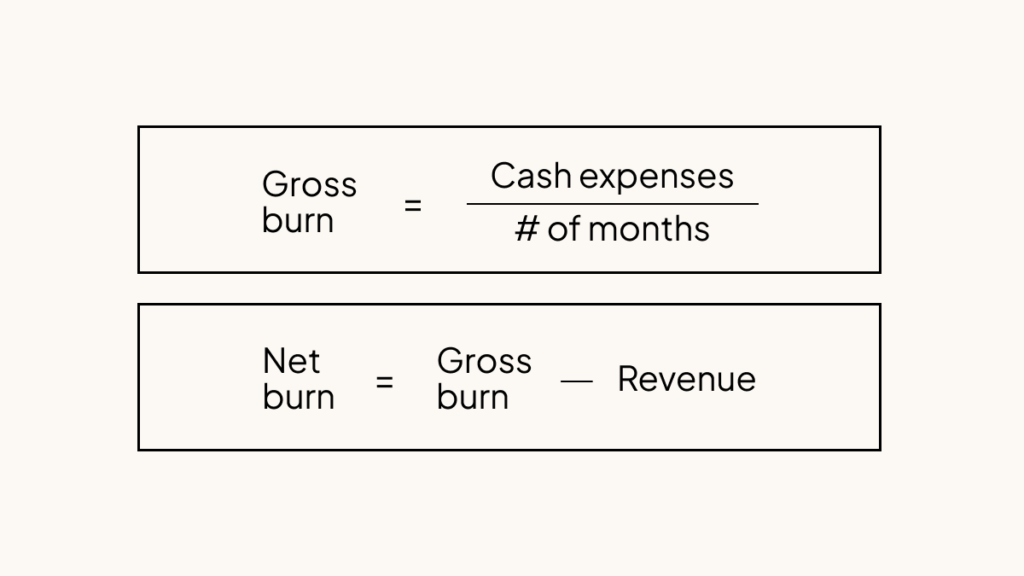The burn rate represents the speed at which an unprofitable company consumes its cash reserves. It’s the rate at which a startup company is spending its venture capital to finance overhead before generating positive cash flow from operations. It’s a measure of negative cash flow.Burn rate is most often a consideration for young life sciences or technology companies without profits and revenue in some cases. It’s usually quoted in terms of cash spent per month. It would mean that a company is spending $1 million per month if it’s said to have a burn rate of $1 million.

What is Burn Rate?
Burn Rate refers to the rate at which a company depletes its cash pool in a loss-generating scenario. It is a common metric of performance and valuation for companies, including start-ups. A start-up is often unable to generate a positive net income in its early stages as it is focused on growing its customer base and improving its product. As such, seed stage investors or venture capitalists often provide funding based on a company’s burn rate.
How to Calculate Burn Rate?
1. Gross Burn Rate
Gross Burn Rate is a company’s operating expenses. It is calculated by summing all its operating expenses such as rent, salaries, and other overhead, and is often measured on a monthly basis. It also provides insight into a company’s cost drivers and efficiency, regardless of revenue.

2. Net Burn Rate
Net Burn Rate is the rate at which a company is losing money. It is calculated by subtracting its operating expenses from its revenue. It is also measured on a monthly basis. It shows how much cash a company needs to continue operating for a period of time. However, one factor that needs to be controlled is the variability in revenue. A fall in revenue with no change in costs can lead to a higher burn rate.

What are the Implications of a High Burn Rate?
A high burn rate suggests that a company is depleting its cash supply at a fast rate. It indicates that it is at a higher likelihood of entering a state of financial distress. This may suggest that investors will need to more aggressively set deadlines to realize revenue, given a set amount of funding. Alternatively, it might mean that investors would be required to inject more cash into a company to provide more time for it to realize revenue and reach profitability.
How to Reduce Burn Rate?
1. Layoffs and Pay Cuts
Typically, an investor may negotiate a clause in a financing deal to reduce staff or compensation if a company is experiencing a high burn rate. Layoffs often occur in larger start-ups that are pursuing a leaner strategy or that have just agreed to a new financing deal.
2. Growth
A company can project an increase in growth that improves its economies of scale. This allows it to cover its fixed expenses, such as overhead and R&D, to improve its financial situation. For example, many food delivery start-ups are in a loss-generating scenario. However, forecasts in growth and economies of scale encourage investors to further fund these companies in hopes of achieving future profitability.
3. Marketing
Often, companies spend on marketing in order to achieve growth in their user base or product use. However, start-ups are often constrained, in that they lack the resources to use paid advertising. As such, “growth hacking” is a term often used in start-ups to refer to a growth strategy that does not rely on costly advertising. One example is Airbnb engineers reconfiguring Craigslist in order to redirect traffic from Craigslist onto its own site.
FAQs
How Is the Burn Rate Calculated?
Burn rates and be gross or net. The gross burn rate is simply the total amount of money spent each month. The net burn rate is the amount of money lost each month and takes into account any possible company revenue. It’s calculated using the following formula: (Monthly Revenue – Cost of Goods Sold) – Gross Burn Rate = Net Burn Rate.
Is Burn Rate the Same As Expenses?
It’s the same if you’re calculating the gross burn rate. You must also factor in whatever revenue the company may be generating if you want the net burn rate, however.